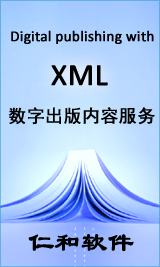Zhuangqi HU Huaming WANG Institute of Metal Research
,
Academia Sinica
,
Shenyang
,
110015
,
ChinaY.Murata M.Morinaga Toyohashi University of Technology
,
Toyohashi
,
Aichi
,
440 Japan
材料科学技术(英文)
The solidification microstructures and solute segregation of a newly developed hot corrosion resistant single-crystal Ni-base superalloy were investigated with a zone-melting and ultra-high thermal gradient unidirectional solidification apparatus.Compared with the microstructures solidified at conventional low thermal gradient conditions,the dendrite arm spacings,the interdendritic microporosity and γ/γ' eutectic,and the severity of solute segregation of the single-crystal superalloy solidified at ultra-high thermal gradient conditions were considerably reduced.It was shown that the microstructure solidified under ultra-high thermal gradient condition is ideal for the full exploitation of the excellent property potentials of single-crystal superalloys.
关键词:
single-crystal superalloy
,
null
,
null
QIAO Lijie LIU Rui XIAO Jimei University of Science and Technology Beijing
,
Beijing
,
China
金属学报(英文版)
The effects of stress components on nucleation sites and propagation directions of stress cor- rosion cracks in brass were investigated with specimens under mode Ⅱ and mode Ⅲ loadings. The results indicated that under mode Ⅱ loading,stress corrosion cracks nucleated on the site with maximum normal stress component and propagated along the plane perpendieular to the maximum normal stress,under mode Ⅲ loading,the stress corrosion crack was not evident on the 45°plane due to the general corrosion in aqueous solution with high NH_4OH concentra- tion,while stress corroded in aqueous solution with low NH_4OH concentration, numerous cracks with spacings of 10—150μm were found on the 45°plane with maximum normal stress and no stress corrosion cracks was observed on the plane with maximum shear stress.
关键词:
stress corrosion cracking
,
null
,
null
,
null
D.Eylon
,
S.R.Seagle
材料科学技术(英文)
The state of Ti research, development and industry is reviewed in this article. The fifty-year anniversary of Ti technology commercialization in the USA provides an opportunity for a historical perspective. Incorporation of "information-age" tools into alloy development, processing, and production invigorates the technology. Consolidation, diversification and globalization have been transforming the Ti industry in the recent years.
关键词:
Yanwu Xu
材料科学技术(英文)
Using mathematical plasticity theories, universal formability (UF) technology has been developed and applied in the automotive stamping engineering and production. As a formability analysis tool, this technology is the major methodology for the development of stamping expert system (solution provider) for (a) product design and feasibility analysis, (b) material automatic selection using nomograms, (c) draw die design using pre-models, and (d) UF and robustness analysis of die performance in finite element analysis (FEA) environment.
关键词:
Journal of Solid State Electrochemistry
The microencapsulation technology was brought in to solidify corrosion inhibitor in order to prolong the releasing time of it. In this work, thiourea (H(2)NCSNH(2)) was used as a corrosion inhibitor and microcapsuled using glutin and polyvinyl alcohol (PVA), respectively, as protective agent. The re-sealing process was used as a way to prolong the releasing time of the H(2)NCSNH(2) encapsulated in microcapsules. It was found that the H(2)NCSNH(2) microcapsule corrosion inhibitor using PVA as a protective agent had a better releasing time. The releasing times of the H(2)NCSNH(2) microcapsule corrosion inhibitors were prolonged from 18 to 48 h by re-sealing process and using PVA as a protective agent. Both the use of PVA as a protective agent and the application of the re-sealing process decreased the encapsulation efficiency of the H(2)NCSNH(2). The performance parameters on protecting Q235 carbon steel from corrosion in 0.1-M H(2)SO(4) solution were evaluated by polarization curve and electrochemical impedance spectra methods. The results showed that the H(2)NCSNH(2) released into the solution from microcapsules could well protect Q235 carbon steel from corrosion and the corrosion-inhibiting mechanisms of it were the same as that of H(2)NCSNH(2).
关键词:
Microencapsulation technology;Corrosion;UV spectrophotometric method;Electrochemical impedance spectra;Polarization curve;carbon-steel;3-percent nacl;mild-steel;in-vitro;release;encapsulation;acid;microparticles;microcapsules;derivatives
G.Montay
,
A.Cherouat
,
A.Nussair
,
J.Lu
材料科学技术(英文)
Residual stress in coatings is the result of individual particle stress. Their effects may be either beneficial or detrimental, depending upon the magnitude, sign and distribution of the stresses with respect to the external load. Tensile stress which exceeds the elastic limit causes cracking in surface coatings or at the interface between the substrate and the coat. Compressive stress, in general, has a beneficial effect on the fatigue life, crack propagation, coating adhesion and on the durability of the top coat during service. Compressive residual stresses can increase the number of cycles before crack initiation begins through a mean stress effect. Temperature gradients which occur during solidification and subsequent cooling are the principal mode of internal stresses generation. Some parameters influence the residual stress field of both the coating and the substrate. Substrate nature, spraying temperature, thickness of the coat layer, substrate preparation (grit blasting conditions), and velocity of the splats are in the relation with the quality of the coating. In this work, we will describe the role playing by the ceramics coating elaboration on the residual stress gradient in depth of the component. The incremental hole drilling technique has been developed to determine the residual stress gradient in depth of the coat and substrate which must be used with particularly conditions. This new technology has been employed on zirconia, alumina and tungsten carbide plasma sprayed coating.
关键词:
Coating
,
null
,
null
,
null






